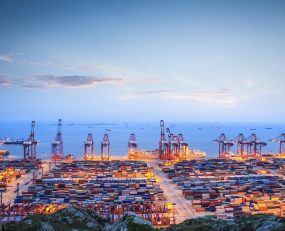
For a logistician working in Britain, the US or even most of continental Europe, the effects of COVID-19 are a problem that is fading fast. In China, it seems, things are only getting worse.
The most recent news is that the radical measures being imposed on the population of Shanghai will continue almost indefinitely, with Reuters quoting the authorities as justifying the continued mass quarantine as having “effectively curbed transmissions”. Residents in most areas in and around the city are now permitted to leave their homes to an extent but many shops remain closed and driving vehicles in many parts of Shanghai requires a permit. This applies to trucks as well as passenger vehicles.
The effect on all aspects of logistics has also been extreme. Port operations have been the most noticeably affected, with very significant queues of vessels outside the main container terminals. One American academic from New York University in Shanghai published data from VesselsValue suggesting that there were twice as many ships waiting to load or unload outside Shanghai than the already elevated numbers in 2021. The Chinese authorities insist that both the container complexes in Shanghai and all operations at Pudong airport are working normally. This may sort of be true in that the real problem is handling and moving cargo landside, both within the Shanghai area and in many other parts of China. This is a problem that has been familiar to China over the past two years.
Various types of manufacturing are also suffering even though some production activity continues. The most frequently cited example is that of Tesla which has sustained output, in part by getting its workforce to sleep inside the factory. Other producers have not been so lucky.
None of this is new in that these sorts of mass lockdowns have been occurring on and off in China since the beginning of 2020. What is new is that it can happen at such intensity in an urban area as large as Shanghai and that it shows no sign of ending. The implication must be that whilst the rest of the world will see a return to normal levels of capacity in areas such as airfreight, road freight and shipping, China will continue to inject instability into both supply chains and freight transport networks.
Source: Transport Intelligence, 21st April 2022
Author: Thomas Cullen